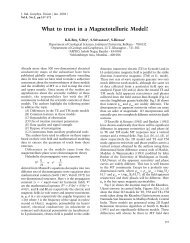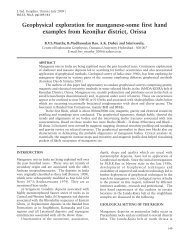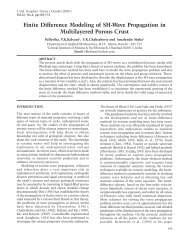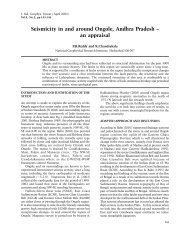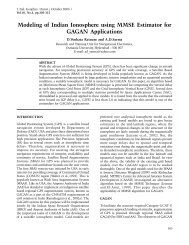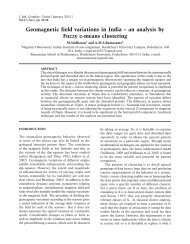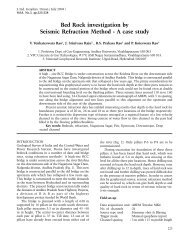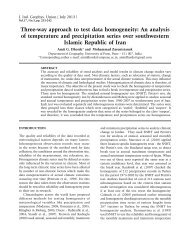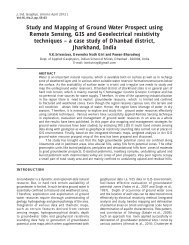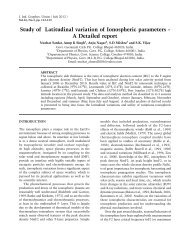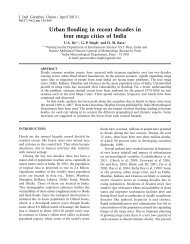Pradip Kumar Pal - IGU
Pradip Kumar Pal - IGU
Pradip Kumar Pal - IGU
You also want an ePaper? Increase the reach of your titles
YUMPU automatically turns print PDFs into web optimized ePapers that Google loves.
Figure 1D. Geomorphic features in the study region.STUDY REGIONThe present study covers from latitudes 26 0 to 27 0N and longitudes 91 0 to 95 0 E of the Northeast India.However to study the seismicity patterns, as well asto correlate with the fractal mapping of naturaldrainage systems the surrounding regions have alsobeen incoroporated. The relief of most of the hills inthe study region varies from 130 meters to 1610meters above mean sea level. Geologically, the studyarea comprises oldest to youngest rock types:Precambrian gneissic complex, the Shillong group,older and younger alluvium. The topography of thisregion reveals a criss-cross pattern of faults cuttingthe ancient rocks of the basement (Fig. 2). Theearthquakes in the Himalayan arc are referred tocollision tectonics and are associated with the knownregional thrusts, the Main Boundary Thrust (MBT)46



